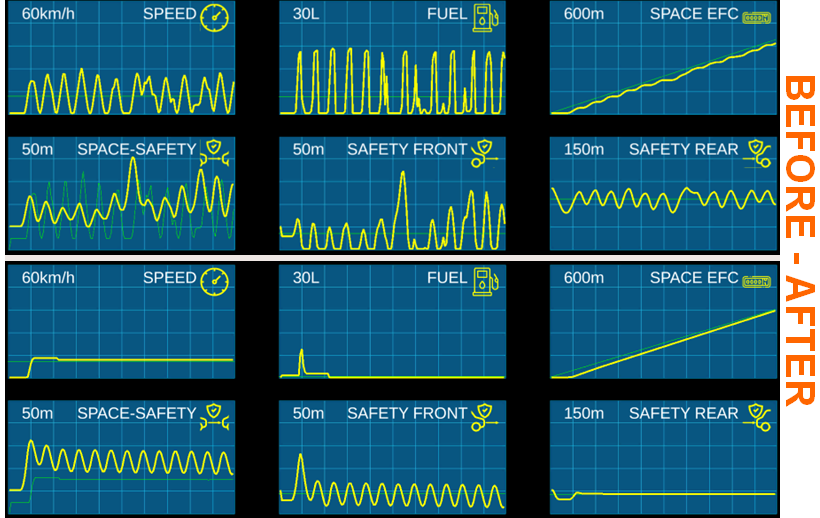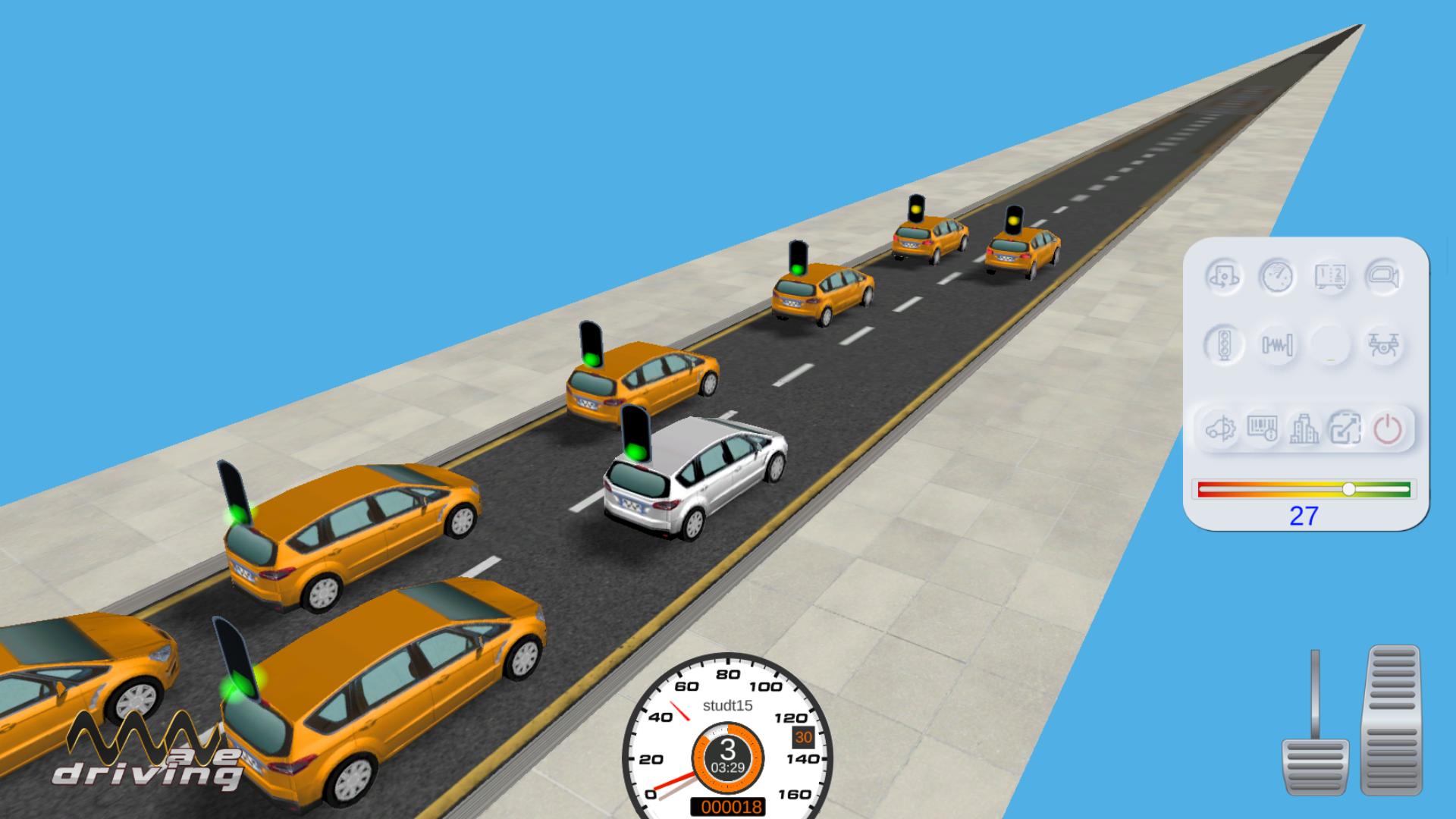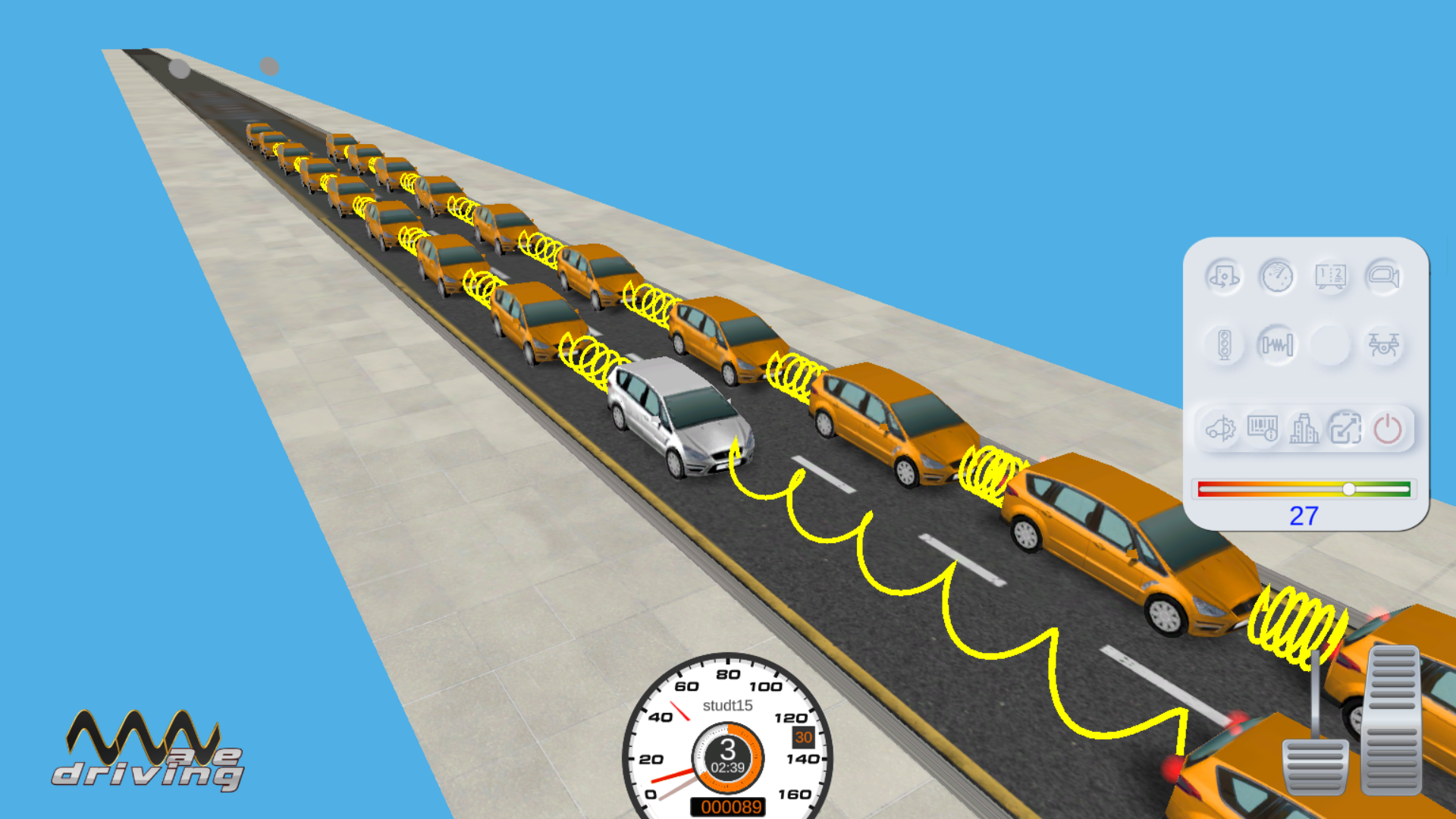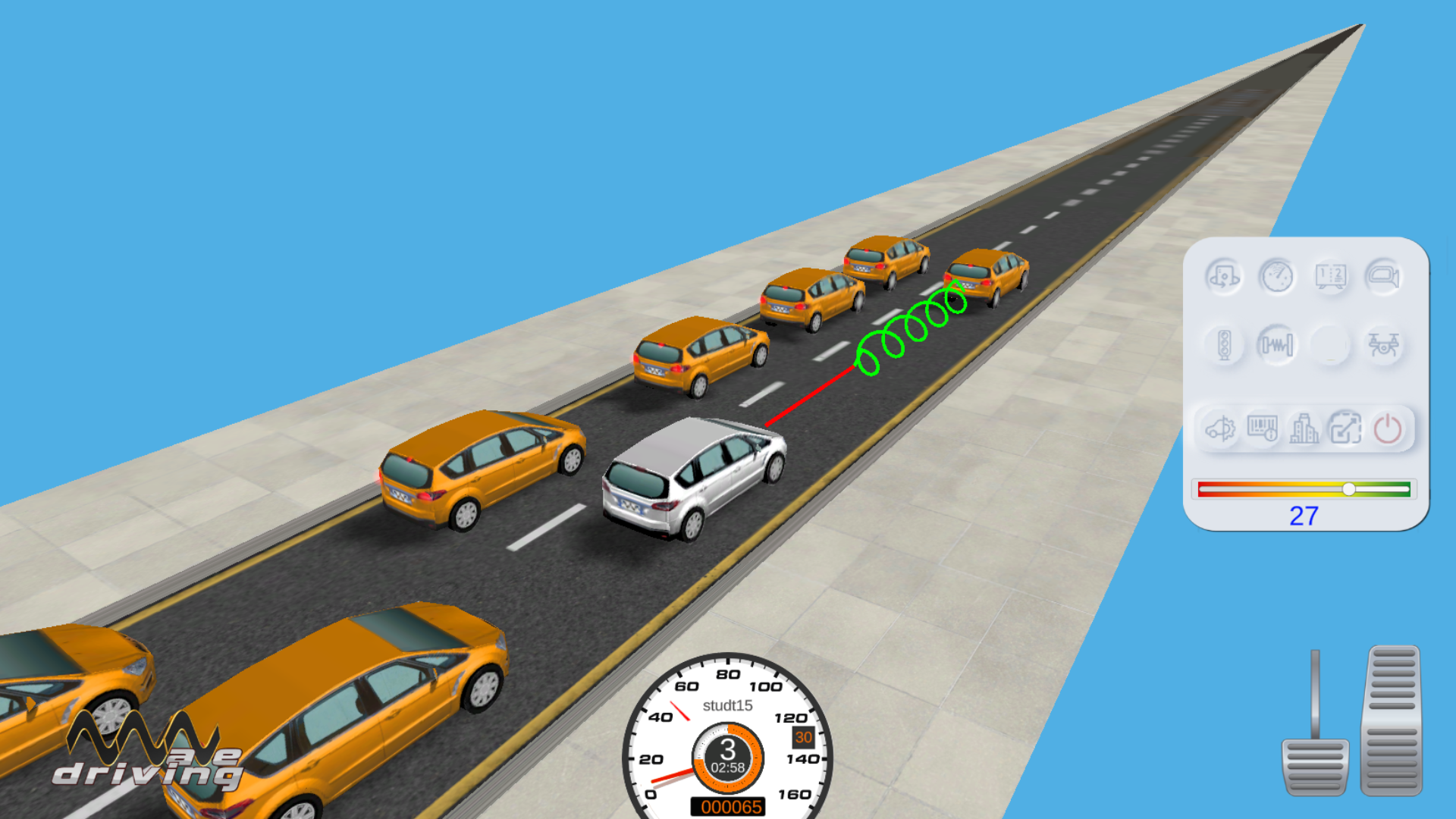Introduction to WaveDriving®
WaveDriving® is a innovative and certified technique developed in Spain Melchor that redefines the understanding of vehicular traffic dynamics through the analysis of movement waves.
Fundamental equation of WaveDriving®: "The movement wave of a vehicle in a platoon is the wave of the first vehicle plus the sum of the individual waves of the following drivers (excluding the leader)".
Mathematical Formalization
If \(\phi_0(t)\) describes the leader's trajectory (position as a function of time), the dynamics of the \(i\)-th vehicle (\(i \geq 1\)) is modeled as:
where:
- \(\Delta \phi_k(t)\) captures the disturbances (accelerations/braking) of driver \(k\)
- \(i\) is the vehicle index in the platoon
- \(t\) represents time
Physical Interpretation:
The position of each vehicle is the superposition of:
- The leader's base wave (\(\phi_0(t)\))
- The cumulative sum of disturbances (\(\sum \Delta \phi_k(t)\)) from all preceding vehicles
This approach radically differs from classical models like Newell's car-following theory, as it considers the complete system of interactions rather than isolated vehicle pairs.
Jam-Absorption Driving (JAD)
Jam-Absorption Driving (JAD) is a driving strategy inspired by the principles of Newell's vehicle-following theory, but which reaches its full potential when integrated with WaveDriving®.
Principles of JAD
- Proactive absorption of disturbances
- Minimization of traffic jam propagation
- Optimization of distance and speed
Relationship with WaveDriving®
JAD can be interpreted as a technique to minimize individual disturbances (Δφₖ(t)) in the context of the wave superposition described by WaveDriving®.
The Three Gaps in WaveDriving®
One of the most innovative conclusions of WaveDriving® is that between a vehicle and its predecessor there isn't a single gap, but three distinct spaces with specific functions:
1Wave Absorption Zone
Space dedicated to dampening the energy disturbance generated by the preceding vehicle. Acts as a "cushion" to absorb waves without transmitting them to the rest of the platoon.
2Road Safety Distance
The minimum space for emergency braking (classic "2-second rule"), but dynamically adjusted based on the phase of the preceding vehicle's wave.
3Space Balancing
Indicator of asphalt use efficiency. Positive means space wastage, negative indicates safety distance invasion.
The Six Electro-Car-Diagrams
By projecting a driver's wave onto six distinct planes, we obtain the six electro-car-diagrams that enable multidimensional analysis of vehicular performance:
| Diagram | What it measures | Relationship with WaveDriving® |
|---|---|---|
| 1. Speed Efficiency | Speed management to maintain stable wave | Minimizes Δφₖ(t) (disturbances) |
| 2. Consumption Efficiency | Relationship between motion wave and energy consumption | Abrupt disturbances generate higher consumption |
| 3. Space Efficiency | Use of surrounding space for harmonic flow | Optimal position minimizes interference |
| 4. Distance and Safety Relationship | Management of front, side and rear distances | Extends Newell's distance concept to 3D |
| 5. Frontal Road Safety | Risk of frontal or rear-end collision | Analyzes φᵢ(t) - φᵢ₋₁(t) |
| 6. Rear Road Safety | Impact on following vehicles | Evaluates downstream disturbance propagation |

Figure 1: Visual representation of the 6 Electro-Car-Diagrams
Actual driver: before and after completing WaveDriving® training
Comparison with Classical Models
| Aspect | Newell's Theory | WaveDriving® |
|---|---|---|
| Unit of analysis | Leader-follower pair | Entire platoon (wave system) |
| Mathematical basis | Time-shifted trajectories | Wave superposition (φᵢ(t)) |
| Origin of disturbances | Binary interaction | Sum of individual waves |
| Distance concept | Single gap | Three dynamic gaps |
Practical Applications
For Autonomous Vehicles
Algorithms can use the three gaps to anticipate disturbances and adjust distances in real time. Space balancing would serve as an optimization metric.
In ADAS Systems
Driving assistants could integrate the electro-car-diagrams to provide real-time feedback to human drivers.
Driver Training
Teaching drivers to actively manage their three gaps and understand how their actions affect global traffic flow.


